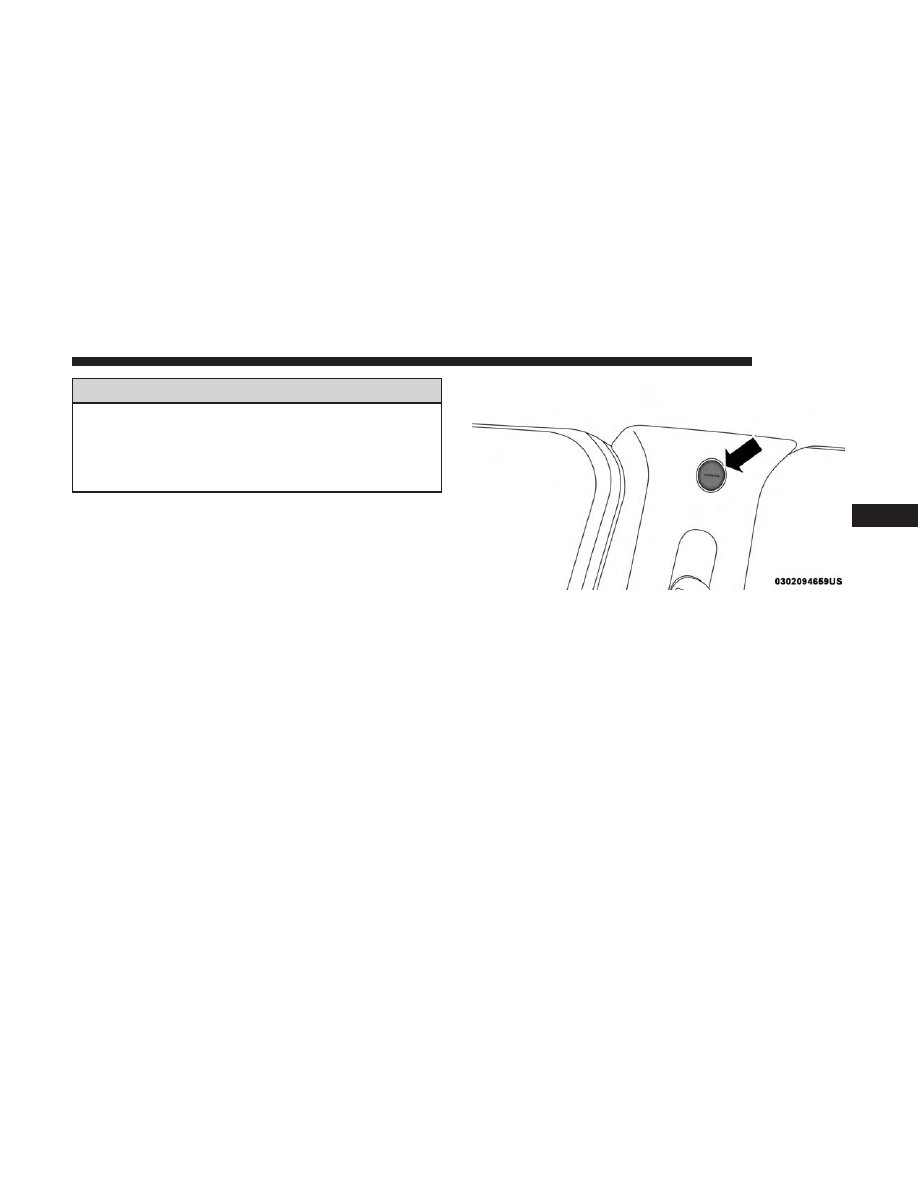Chrysler Pacifica Hybrid (2019 year). Manual - part 16

WARNING!
Do not use accessory seat covers or place objects
between you and the Side Air Bags; the performance
could be adversely affected and/or objects could be
pushed into you, causing serious injury.
Supplemental Side Air Bag Inflatable Curtains (SABICs)
This vehicle is equipped with Supplemental Side Air Bag
Inflatable Curtains (SABICs).
Supplemental Side Air Bag Inflatable Curtains (SABICs)
are located above the side windows. The trim covering the
SABICs is labeled “SRS AIRBAG” or “AIRBAG.”
SABICs may help reduce the risk of head and other injuries
to front and rear seat outboard occupants in certain side
impacts, in addition to the injury reduction potential
provided by the seat belts and body structure.
The SABIC deploys downward, covering the side windows.
An inflating SABIC pushes the outside edge of the head-
liner out of the way and covers the window. The SABICs
inflate with enough force to injure occupants if they are not
belted and seated properly, or if items are positioned in the
area where the SABICs inflate. Children are at an even
greater risk of injury from a deploying air bag.
Supplemental Side Air Bag Inflatable Curtain (SABIC)
Label Location
5
SAFETY
249